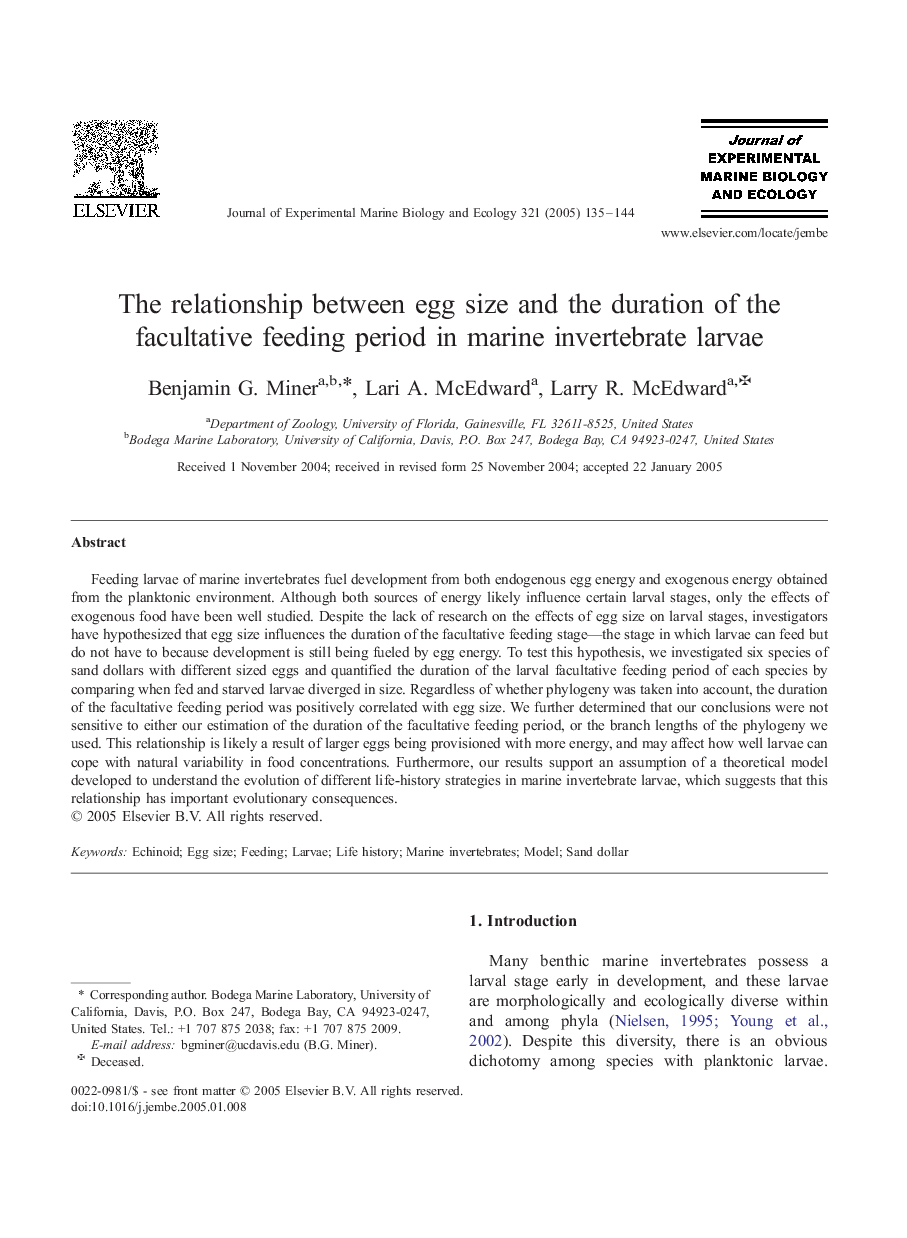| Article ID | Journal | Published Year | Pages | File Type |
|---|---|---|---|---|
| 9448750 | Journal of Experimental Marine Biology and Ecology | 2005 | 10 Pages |
Abstract
Feeding larvae of marine invertebrates fuel development from both endogenous egg energy and exogenous energy obtained from the planktonic environment. Although both sources of energy likely influence certain larval stages, only the effects of exogenous food have been well studied. Despite the lack of research on the effects of egg size on larval stages, investigators have hypothesized that egg size influences the duration of the facultative feeding stage-the stage in which larvae can feed but do not have to because development is still being fueled by egg energy. To test this hypothesis, we investigated six species of sand dollars with different sized eggs and quantified the duration of the larval facultative feeding period of each species by comparing when fed and starved larvae diverged in size. Regardless of whether phylogeny was taken into account, the duration of the facultative feeding period was positively correlated with egg size. We further determined that our conclusions were not sensitive to either our estimation of the duration of the facultative feeding period, or the branch lengths of the phylogeny we used. This relationship is likely a result of larger eggs being provisioned with more energy, and may affect how well larvae can cope with natural variability in food concentrations. Furthermore, our results support an assumption of a theoretical model developed to understand the evolution of different life-history strategies in marine invertebrate larvae, which suggests that this relationship has important evolutionary consequences.
Related Topics
Life Sciences
Agricultural and Biological Sciences
Aquatic Science
Authors
Benjamin G. Miner, Lari A. McEdward, Larry R. McEdward,
